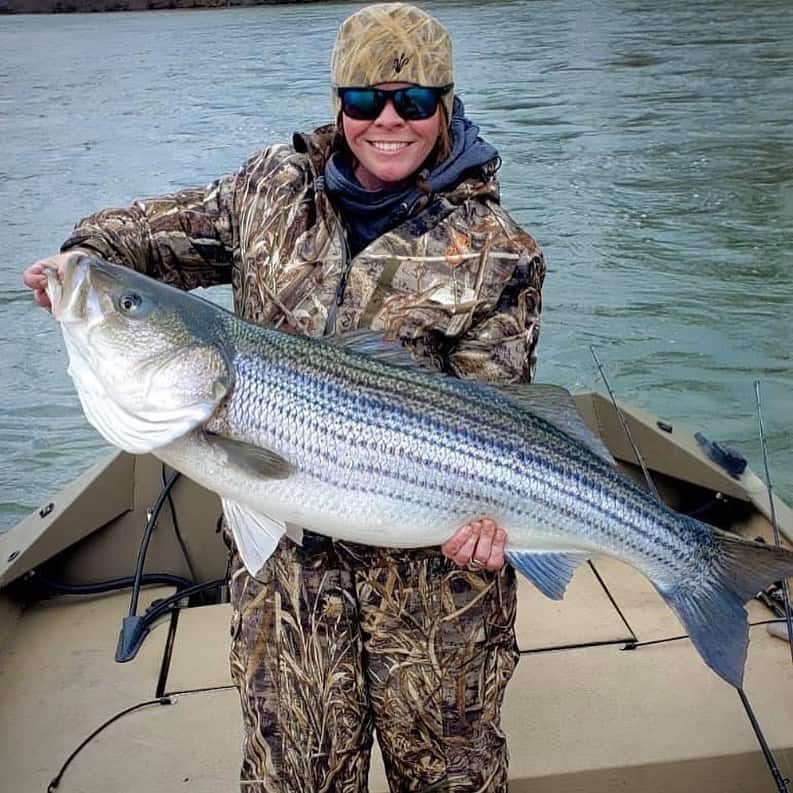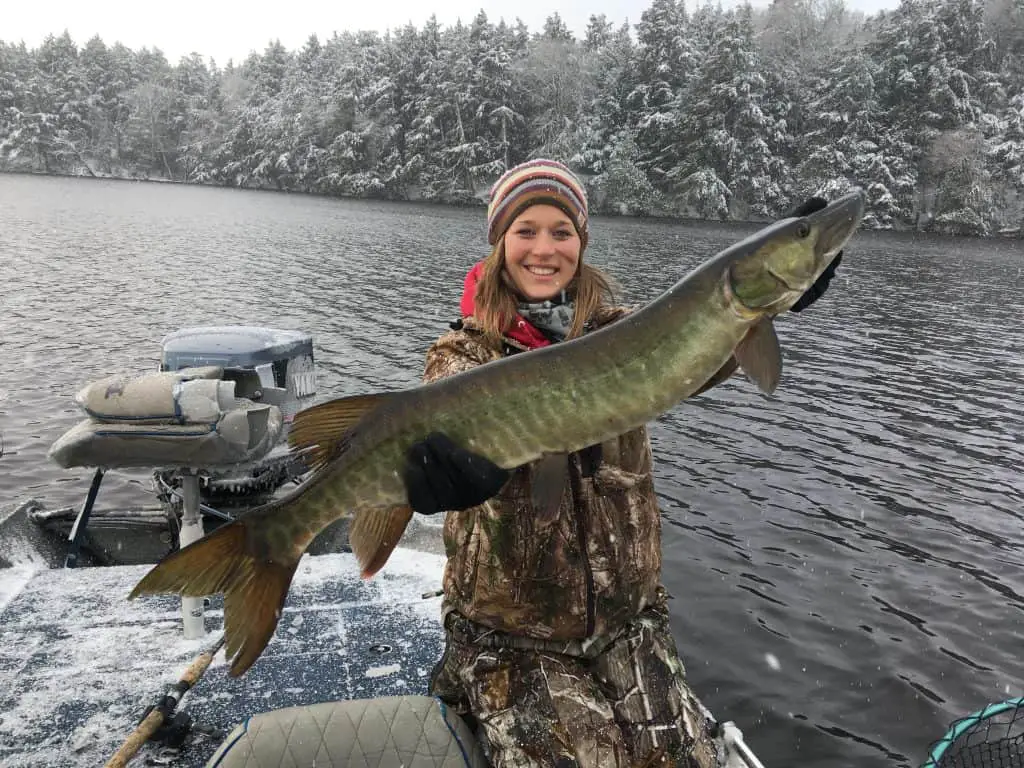Top 27 Freshwater Game fish species
The topic of this article is freshwater fishing for the top 27 freshwater game fish species. The majority of fishing done in North America is done in freshwater, as these bodies of water are much more accessible than saltwater coastal areas. There are many different freshwater game fish they can be caught by anglers.
check out my post on the best freshwater fishing tackle and lures
The fish species outlined in this list of the top 25 freshwater game fish species will be in no particular order. However, we will start off with the most plentiful, and therefore most popular, freshwater fish species. Much of the popularity is dependent on how widely fish are distributed, and is really no reflection on its attributes as a game fish.
Top Freshwater game fish species; Panfish
Panfish are probably the most targeted freshwater fish species in North America. That is why they lead off our list of the top 27 freshwater game fish species. They are widely distributed, prolific, easily caught using a wide variety of angling techniques, attractive, and most are very good to eat. Most anglers target panfish using ultralight spinning tackle. However, there are also caught by anglers fly fishing, ice fishing, and even using a simple cane pole.
Here is a link to the best 9 fishing lures for bluegill and panfish.
1) Crappie

Crappie are the largest fish in the panfish group. They are an extremely popular and widely distributed freshwater fish species. Crappie are a schooling fish, and once located, the action can be fast. Crappie tournaments are becoming more numerous as these fish continue to gain in popularity. They are beautiful fish that put up a decent tussle and are terrific eating.

There are two varieties of crappies; white crappie and black crappie. While there are subtle differences in color patterns and fish habits, for the purposes of this article they will be treated the same.
While crappie can be caught using a variety of lures and baits, the vast majority of crappie are landed by anglers either using live minnows or jigs. Both are extremely effective for crappie fishing. Crappie are generally caught in shallow water in the spring and around structure in deeper water the rest of the year. Trolling with jigs and live minnows is a very effective technique to help locate schools of crappie. Ice fishermen catch them as well.
2) Bluegill

Bluegill are a widely distributed freshwater panfish. They average 6 inches to 8 inches, with 10 inches being a very nice fish. Bluegill are aggressive and prolific. They spawn on the full moons in summer, and this is the time of year many anglers target them. The bite often peaks on the full moons in June, July, and August. However, they are caught all year long, including through the ice.

Bluegill will readily take artificial lures such as tiny jigs, spinners, and flies. Bluegill are predators that are aggressive for their size. Roostertail spinners, Beetlespins, and small curly tail grubs and marabou jigs are top producing lures. Live baits are also very effective, with worms and crickets being the top choices.
3) Redear sunfish

Redear sunfish are another very popular member of the panfish family. “Shellcracker” is another name for readier sunfish. They generally grow larger than bluegill. While redear sunfish are native to the southeast portion of the United States, they have been introduced to other parts of the country where they flourish and thrive.

Redear sunfish can be caught using artificial lures, however the majority of them are landed by anglers using live and natural bait. They earned their nickname “shellcracker” due to their affinity to snails and other freshwater mollusks. Earthworms are an excellent choice as a live bait for readears. They often times prefer water slightly deeper than bluegill and other panfish.
4) Yellow perch

Yellow perch are a very tasty panfish that are found in cooler water in the northern states. The Great Lakes area is pretty much the center of their inhabited area. Yellow perch average around ten inches. They school up heavily and eat minnows, crustaceans, and just about everything else. They are a favorite of anglers ice fishing. Yellow perch are one of the best eating fish the swims!
Other panfish species

There are numerous other panfish species available to anglers in North America. They include but are not limited to rock bass, green sunfish, pumpkinseed, red breast sunfish, longear sunfish, war mouth, and spotted sunfish. Most of these species are caught using the same baits and techniques as other sunfish.
Top Freshwater game fish species; BASS
The term “bass” can be a bit confusing. Largemouth bass and smallmouth bass are incredibly popular species in North America. However, they are not really bass, they are sunfish. Striped bass, white bass, and yellow bass are members of the true Bass family. However, since most anglers except largemouth and smallmouth as bass, we will refer to them as such in this discussion.
5) Largemouth bass

Largemouth bass need no introduction to freshwater anglers. It would be easy to make the argument that they are number one in the list of top 25 freshwater game fish. While originally from the East and Southeast, largemouth bass have been introduced all over North America, and all over the world!
Read Capt Jim’s article on largemouth bass fishing in this link!
Largemouth bass adapt well to a large variety of environments. This certainly has been a key to their success. They can be caught in large lakes and impoundments as well as farm ponds and small creeks and rivers. Generally speaking, they prefer a slower moving water than do some other fish species. They can also tolerate a wide range of water temperature. This is another factor that has made them so successful.

Largemouth bass average a couple pounds but grow to over 20 pounds. The world record currently is 22 lbs. 4 oz. Largemouth bass can be caught in large schools or also as solitary fish. They are ambush predators with a huge mouth and a broad tail. Largemouth bass will actively chase bait in open water. Often times, bass simply flare there gills and inhale their prey.
Bass tournament influence
Tournaments targeting largemouth bass began in the 60s, and this is a major component in their popularity. Bass fishing tournaments till this day help develop and refine techniques to catch these fish. These tournaments are also often times given credit for the beginning of the “catch and release” philosophy. Anglers quickly learn that catching and killing so many fish was detrimental to the species.

Largemouth bass spawn in the spring. Spring is a relative term, depending on what part of the country they are in. Bass spawn in January and February in the deep South and as late as June up north. Often times, the largest fish are caught during this time of year as the big females are up shallow on the beds. However, largemouth bass of all sizes can be taken year-round.

While some anglers catch largemouth bass using live bait, the vast majority are landed by anglers casting artificial lures. Soft plastic baits, plugs, spinner baits, spoons, and just about any other lure will produce largemouth bass when presented properly. Top live baits include various live minnows and nightcrawlers.
6) Smallmouth bass

Smallmouth bass are quite different in habits than their cousins the largemouth bass. “Smallies” are kind of like a mix between largemouth bass and trout. They prefer cooler, clear water and will often be found in flowing rivers and streams. They have a beautiful brown color, earning them the nickname “bronzebacks”.

Smallmouth bass are native to the Midwest, especially the areas in and around the Great Lakes. However, they have been successfully introduced to many parts of the country. They are not as widely distributed as largemouth bass. Smallmouth bass cannot tolerate the heat of southern waters, and are not very common in the western states.

smallmouth bass baits
Anglers targeting smallmouth bass do so using both artificial lures and live bait. Smallmouth bass love rocks and crayfish are one of their favorite foods. Crawfish are very high in protein and are often found around rocks and gravel. Many of the artificial lures use to catch smallmouth bass imitate crayfish.

Smallmouth bass also feed on small minnows that are available in the environments that they live. Small plugs, spinners, and spoons work well. Top live baits would include crayfish, minnows, leeches, and nightcrawlers.
Anglers can view and shop for the best smallmouth bass lures in this link.
7) Striped bass

Striped bass are a saltwater fish species that migrates up into freshwater to spawn. Stripers can’t tolerate absolute freshwater. They were introduced into larger lakes and have become a huge freshwater success story. Many of the larger lakes in the United States were created in the 60s and 70s. They offered fantastic fishing for largemouth bass at that time. However, as much of the flooded timber rotted and deteriorated, there was less cover for the largemouth bass.
Striped bass are an open water fish and were introduced into many larger lakes and river systems. Fish biologist then added forage fish, primarily shad, for the striped bass to feed on. So now, striped bass have huge lakes to swim in along with a great forage base. This has resulted an excellent striped bass fishing and many lakes and the southern half of the United States, from coast to coast.

In most of these lakes, striped bass are unable to spawn naturally. They do so in freshwater rivers, and often times dams block their access. Therefore, states continue to stock striped bass into lakes as the need arises.
Trolling for striped bass

Trolling is a very effective technique used to catch striped bass. They are often times found in deeper water on channel edges and around other structure. Trolling is a great way to get the lures or baits down deep while covering a lot of water in search of a school of fish. Stripers school up and once fish are found the action can be hot.
Anglers can catch striped bass by casting lures as well. This is particularly true when stripers heard bait fish to the surface and feed on them aggressively. Just about any lure that remotely resembles the shad they are feeding on should produce a strike. They can also be caught in shallower water and in some rivers in the cooler months.

Top artificial lures are jigs, spoons, and plugs. Larger lures tend to catch larger fish. However, the lure should be matched to the size of the available forage. The top live baits by far our live shad and herring. Catching these baits and keeping them alive can be tricky. Anglers slow trolling them do very well.
8) White bass and striper hybrids

White bass are smaller versions of striped bass. They are fairly aggressive fish that school up in large numbers. Hybrids average around a foot or so and feed on small bait fish, worms, and crustaceans. They are widely distributed across the United States centering on the Midwest.
Striped bass and white bass hybrids are another fish management success story. These fish grow very quickly and to a decent size, averaging 3 to 5 pounds and growing as large as 10 pounds. Hybrids are also universally known as “wipers”. Hybrids have been introduced into many of the same lakes as have been striped bass. They are very similar in habits.

Hybrids are infertile, they do not spawn. Therefore, as fish die off and are harvested, they must be replenished. One of the things that makes them such a great fish is the fact that they grow quite quickly. Hybrids are good eating and anglers can keep them with a clear conscience, as they cannot reproduce.
Top Freshwater game fish species; Catfish

There are three species of catfish that stand out above the others; blue catfish yellow or flathead catfish, and channel catfish. There are many other species of bull heads and the like, but these three catfish species are most targeted by anglers. Channel catfish are the smallest averaging 5 pounds are so, with 20 pounds being a very nice fish. Blue catfish and flathead catfish can both reach in excess of 100 pounds! Catfish are prominently listed on our top 27 freshwater game fish.
All three catfish species have a fairly wide range, with channel cats being the most abundant across North America. Catfish inhabit just about any type of water including streams, rivers, ponds, and large lakes. Flathead catfish tend to prefer slow-moving rivers. Blue catfish have become very popular and are being introduced into more and more large lakes to offer anglers the chance to catch a trophy fish.
9) Channel catfish

Channel cats can be caught just about anywhere in the country, though they are less common west of the Rockies. They are the most numerous of the three catfish species. Channel catfish are predators and actually prefer live or fresh baits. They get a bad rap as “bottom feeders”. While they are opportunistic and will eat just about anything, live or fresh cut baits work best. Channel cats occasionally hit artificial lures, but the vast majority are caught by anglers using live, cut, or commercially prepared baits.

Like most catfish, channel catfish have an extremely keen sense of smell. Therefore, they can be caught in very murky water. Channel catfish prefer moving water where possible. They spawn by laying their eggs in the crevices of rocks in rivers and streams. While considered a “warm water” fish, catfish thrive in the northern states. In fact, the Red River runs between North Dakota and Minnesota and into Canada. It is considered the best trophy catfish water in North America.
10) Blue catfish

Blue catfish grow very large, reaching 150 pounds! They are apex predators that can and will dominate the waters that they inhabit. Their native range is the Mississippi River and it’s tributaries. However, they have been introduced into many other waters, especially large lakes. This offers anglers a true trophy fishery, as blue catfish average 20 pounds and grow much larger. While they prefer fresh water, blue cats can tolerate a bit of salinity. They are becoming abundant in the Chesapeake Bay watershed. Virginia considers them a problem as they may displace native species.
Blue catfish eat a lot, grow large, and have few natural predators. Like most catfish, they are opportunistic and will feed on almost anything. However, they prefer large, live bait fish. Most blue cats are caught by anglers using stout tackle and fresh cut bait such as mullet, shad, herring, and suckers. Fairly heavy conventional tackle is used by anglers who target these large fish.
11) Flathead catfish

Flathead catfish are the most predatory of the three species. They definitely prefer large, live fish to eat. Flathead cats were originally found in the middle of the country, from the lower Great Lakes to Texas. However, they have been introduced to many other areas of the country. Flathead catfish are considered invasive in some areas. They are also know as “yellow catfish” and “shovelhead catfish.” They average around 20 pounds but grow over 100 pounds.
Flathead catfish prefer live prey, especially fish. Anglers targeting flathead cats use live bluegill, sucker, shad, and other fish that are local forage for these fish. They are often caught at night in very shallow water as they cruise for food. Like the blue catfish, flathead catfish require patience and stout tackle. Slow moving rivers and large lakes are the top spots to target these big catfish species.
The “pike” family
12) Walleye

Walleye are an extremely popular game fish in the northern states and Canada. While they are fun to catch, the reason that they are so prized is for their value on a dinner plate. Walleye are fantastic eating! They do put up a decent tussle, but will not be confused with other game fish. Anglers can read this comprehensive post on walleye fishing to get more information.
The Great Lakes and upper Midwest are the center of walleye native populations. They have been introduced into many lakes that are cool enough to support them. Walleye average around 15”, but grow to over ten pounds. Lake Erie in particular is a terrific walleye fishery.

Walleye feed near the bottom, and that is where most fish are hooked. One look at their eyes will tell anglers that they are also nocturnal feeders. Walleye feed on small bait fish along with crustaceans. They are caught by anglers using live baits such as nightcrawlers, minnows, and leeches. They readily take artificial lures, especially jigs and crank baits.
Trolling is a popular and very effective method for taking walleye. Anglers troll both artificial lures and live baits. Slow trolling with live bait is very effective. Anglers use nightcrawlers on harness rigs to slow troll for walleye. Plugs and spoons are used behind downriggers, planer boards, and on flat lines.

13) Sauger

Sauger are a close, but smaller relative of the walleye. They are similar in appearance and are also very good to eat. Many anglers consider them to be a “river fish”. Sauger are very migratory and will extend their ranges. Dams that interrupt their travels are causing issues with the species, as has over harvest.
14) Northern pike

Northern pike or “Northerns” as they are often called, are terrific game fish! They are found in cooler waters in the northern states and some of the top pike waters in the world are located in Canada. Pike are ambush predators that blend in with weeds and attack their prey. Pike are considered good to eat by many anglers, though they are difficult to clean.
Northern pike are found in streams, rivers, ponds, and lakes of all sizes. They prefer live prey. Larger fish will go after some big baits. Many northern pike are caught by anglers casting lures in and around weed beds in fairly shallow water. Spoons, large plugs, and inline spinners are top baits. Large live baits such as suckers and minnows also produce pike.

While a lot of pike are caught in shallow water, anglers seeking larger pike target drop-offs and other structure in slightly deeper water. Ice fishing is also very productive and popular. Pike are caught through the ice by anglers using lures such as jigs and spoons and on live minnows.
15) Musekellunge

Muskellunge, better known as “Musky”, is considered by many anglers to be the ultimate freshwater angling challenge. Given the moniker, “The fish of ten thousand casts”, in most situations, musky are difficult to hook. They are apex predators, growing to over 60 pounds. Therefore, there are not a lot of them.
Musky are originally from the Great Lakes area, but their range has been extended. They are caught as far south as Tennessee. Most anglers recognize their value as a game fish and release them. While live baits fool some musky, most are caught by anglers using artificial lures.

Trolling and casting are the two most effective methods for catching musky. Anglers use fairly heavy tackle and wire leaders to cast large lures in search of a trophy. Spoons, plugs, and inline spinners are top baits. Weed beds, points, and back bays are prime spots. Anglers also troll lures and live baits along weed edges to catch musky. Musky are caught through the ice as well.
16) Chain pickerel

Chain pickerel are smaller versions of northern pike. They are similar in shape with a “chain link” design on their body. Three pounds is a nice fish. They are widely distributed, being found as far south as Florida. Most are caught by accident by anglers fishing for other species.
Top Freshwater game fish species; Trout

There are several different trout species that are found in North America. While there are actually quite a few strains of trout, the species that are most widely distributed and targeted by anglers are rainbow trout, brown trout, brook trout, cutthroat trout, and lake trout.
Trout generally prefer clean, cold water. Most trout were originally caught in the northern states and Canada, but they have been successfully stocked in southern states including Georgia, Arkansas, Texas, and Arizona. This is especially true for rainbow and brown trout, as they are more tolerant of warmer water temperatures.

Trout forage
Trout have a diverse diet. As young fish, they feed heavily on insects and larva. As they grow bigger, trout switch to eating larger prey such as small fish and crayfish. Many anglers fly fish for them, in fact, that is pretty much how the sport originated. Many books have been written on the subject.
Anglers using spinning tackle certainly catch a lot of fish as well. Spinners and spoons are very effective lures in streams and lakes. Small plugs will catch fewer fish, but will catch larger ones. Trolling is very effective in deep, large lakes such as the Great Lakes.
17) Rainbow trout

Rainbow trout are one of the most recognizable and popular game fish in North America and all over the world. They are a gorgeous fish, with a bright red “rainbow” on the side. Trophy rainbow trout can be caught all over the United States. Some of the best spots are pretty far south, such as Lee’s Ferry in Arizona, the White River in Arkansas, and the private streams in north Georgia.
Of course, when rainbow trout are mentioned, most anglers thing of a fast flowing stream or small river. Waters throughout the northern half of the country hold rainbow trout.

Steelhead trout are rainbow trout that leave streams for open water. They take on a silvery gray color, thus the name. On the Pacific coast, they go out into the ocean then return several years later to spawn. In the Midwest, they use the Great Lakes as “oceans”, returning to streams. Unlike salmon, they do not die. They are terrific game fish as they have grown very strong out in deeper water.
18) Brown trout

Brown trout are perhaps the most widely distributed trout species as they can tolerate the warmest water. They also grow the largest of the “river” trout. Brown trout were introduced to America from Germany in the late 1800s. Many anglers refer to them as “German Browns” for this reason.
While brown trout eat insects, they switch over to larger prey at a fairly early age. Anglers trolling plugs and spoons in large lakes catch some very large brown trout. They are also plentiful in lakes and rivers throughout North America. Fly anglers catch a lot of trout as well. Brown trout can be caught in live bait such as worms, minnows, and fish eggs.
19) Brook trout

Brook trout are a beautiful fish. They have a bright orange belly with a white outline on the fins. They are originally from the northeast United States, but have been successfully transplanted across the US and Canada. Brook trout are often found in the tiniest of streams, thus the name. Brookies do not grow nearly as large, with six inches being average.
Read about brook trout fishing tackle here
While brook trout are small, many anglers enjoy the challenge of hiking up into the mountains and fooling them on very light tackle. “Native” brookies in particular are highly valued by fly anglers. Some waters in Canada do offer fishing for brook trout to five pounds.
20) Cutthroat trout

Cutthroat trout are found in the northwest part of the United States. They are an excellent game fish that are most often caught by anglers fly fishing in streams and rivers. They are generally caught from Montana west to the coast.
21) Lake trout

Lake trout are a bit different than any trout species. In reality, they are in the “char” family. Lake trout are normally caught in deep, clear, cold lakes in the northern states and in Canada. However, they are caught in streams and rivers occasionally, especially in early spring when they spawn. Most lake trout are caught by anglers trolling large spoons which mimic the herring and other bait fish that lakers feed on.
Top Freshwater game fish species; Salmon

Salmon are terrific game fish! They are only this far down on the list because of their lack of availability and limited range. Chinook (also know as “King”) salmon, Coho (silver) salmon, Atlantic salmon, and pink salmon are the top salmon species targeted by anglers. Salmon are caught by anglers fly fishing, casting lures and live and cut baits, and by trolling.
22) Atlantic Salmon
Atlantic salmon are incredible fighters and considered a top game fish in the world. However, their numbers are really down from years past. Their delicious flesh is one issue, as are habitat loss and fishing pressure.
23) Chinook salmon

Chinook salmon, or “king” salmon are found on the west coast of the United States and Canada up to Alaska. Kings have also been successfully stocked in the Great Lakes as well. They are a fantastic game fish that grow quite large. Anglers do well in the spring and fall. They are taken by trolling and drifting with lures and egg sacks, as well as cut fish.
24) Coho salmon

Coho, or silver, salmon are plentiful in the Great Lakes and are the back bone of the fishery. They are available to anglers year-round and are caught using the same methods as other salmon. They do not grow as large as chinook salmon, but they make up for it in numbers and availability.
25) Pink salmon

Pink salmon, or pinks, are the smallest, but most abundant of the Pacific salmon. They range from the Sacramento River north. Like king salmon, they have been successfully introduced into the Great Lakes. They can be difficult to catch once they move into rivers to spawn.
26) Carp

Carp were once considered “trash” fish and were undesirable, mostly because they are not considered good to eat. However, anglers of late have grown to appreciate them as a game fish. They grow large, are widely distributed, and put a a very good fight. Some guides actually sight fish for them using fly rods, earning them the nickname, “Midwest bonefish”. They are very challenging in shallow water. Most carp are caught by anglers using natural baits suck as worms, corn, and dough balls.
27) Sturgeon

We saved the biggest fish for the end of the list. Sturgeon grow very large, over 12 feet in North America. There are several different sturgeon species, with the largest fish being caught in the Pacific northwest, especially the Columbia River. Sturgeon are prehistoric looking and almost all of them are caught by anglers using cut bait on the bottom.
In conclusion, this is the list of the top 27 freshwater game fish species. What is your favorite species?






